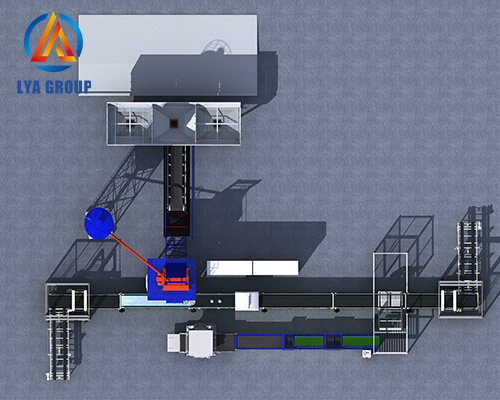Automatic wet casting system
News 2023ŚĻī12śúą21śó• 172

An automatic wet casting system, also known as an automated wet cast concrete production system, is a complete setup of equipment and machinery designed to automate and streamline the process of producing wet cast concrete products. This system is used to efficiently and consistently manufacture a wide range of concrete items, such as precast panels, blocks, pavers, and more. Here’s an overview of the components and processes typically involved in an automatic wet casting system:
Batching and mixing: The system starts with a batching plant that accurately measures and combines the ingredients for the concrete mixture, including aggregates, cement, water, and additives. The materials are then mixed in a concrete mixer to achieve the desired consistency and quality.
Molding and formwork: Once the concrete mixture is ready, it is transferred to the molding section of the system. This involves using automated machinery to fill the pre-designed molds or formwork with the concrete mixture. The molds may be made of steel, plastic, or other materials, depending on the specific application.
Vibration and compaction: After the molds are filled, the automatic wet casting system applies vibration or compaction mechanisms to ensure proper consolidation of the concrete mixture. Vibrating tables, vibrating screeds, or other compaction equipment are used to eliminate air voids and achieve uniform density within the product.
Curing and hydration: The molded concrete products are then transferred to a curing area or chamber, where they undergo a controlled curing process. This can involve steam curing, water curing, or other methods to facilitate proper hydration and development of strength in the concrete.
Demolding and handling: Once the concrete products have cured sufficiently, an automatic demolding system is used to remove them from the molds. This may involve mechanical, hydraulic, or pneumatic actions to release the products gently and transfer them to a handling or transportation system. The demolded products can then be moved to a storage area or directly to the finishing stage.
Finishing and quality control: The automatic wet casting system may include equipment for finishing processes such as trimming, grinding, polishing, or surface treatment to achieve the desired appearance and specifications of the concrete products. Quality control measures, such as inspections, testing, and measuring, are typically integrated into the system to ensure that the products meet the required standards.
Automation and control: An automatic wet casting system incorporates automation and control systems to manage and monitor the entire production process. This includes controlling the flow of materials, adjusting machine parameters, tracking production data, and ensuring safety measures are in place.
It’s important to note that the specific configuration and capabilities of an automatic wet casting system can vary depending on the manufacturer, the size and complexity of the products being produced, and other factors. Consulting with manufacturers or suppliers specializing in automated wet casting systems is recommended to obtain detailed information, equipment recommendations, and support based on specific production requirements.
